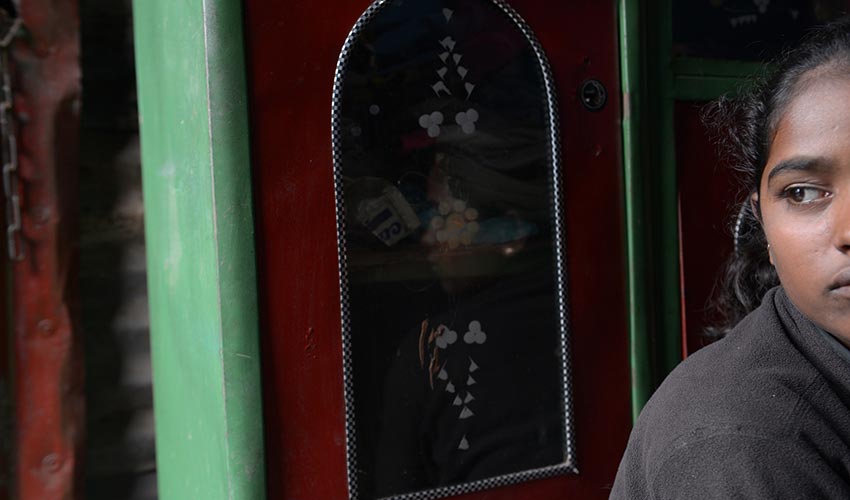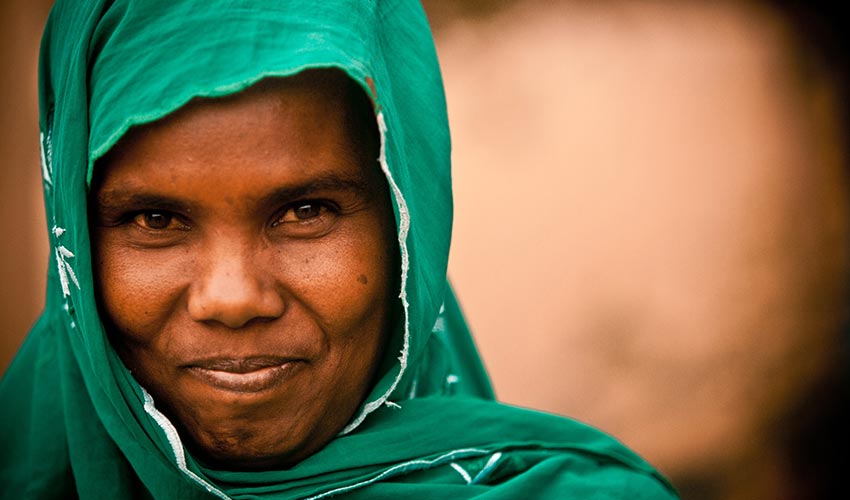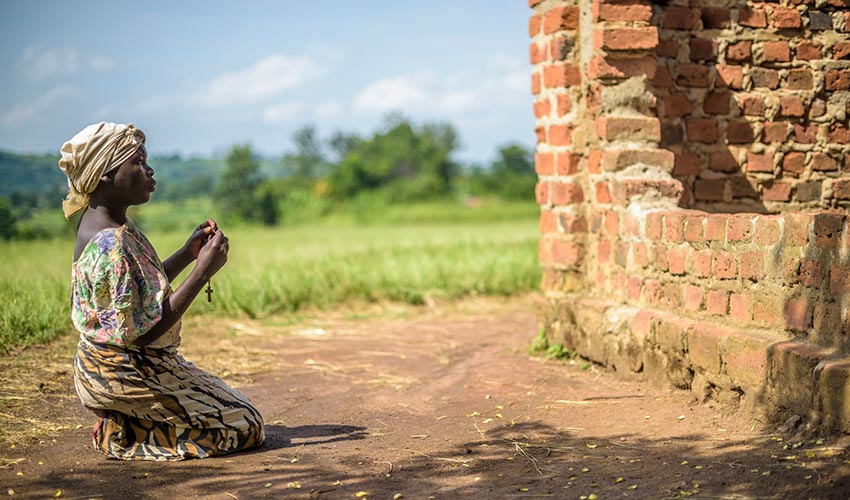The days seem few and far between when stories about a woman being oppressed or exploited somewhere in the world don’t make the news. Child marriage, female genital mutilation (FGM) and obstetric fistula are still among the issues women and girls in the developing world face on a regular basis.
In this article, we provide answers to frequently asked questions and present key facts to help you understand better how child marriage, FGM and obstetric fistula negatively impact women and girls’ lives. You will also read stories of women and girls that have defied the odds and come out on the other side, transformed and even stronger.
Child marriage
Child marriage is defined as a legal marriage or informal union where one or both parties are children under the age of 18. Early marriage usually happens to girls, but it’s not uncommon in some countries for boys to marry before they reach the age of 18.
Latest figures show that approximately
12 million girls globally get married before the age of 18. That translates into 33,000 girls getting married every day.
The reasons behind child marriage are complex and varied. Poverty, tradition and even survival are among the main drivers. Although child marriage happens all around the world, the practice is closely linked to low levels of economic development.
Learn more about child marriage in this comprehensive article.
 Reshma was married off at age 15 and had to drop out of school. Photo: Annila Harris
Reshma's story: married at 15
Reshma was married off at age 15 and had to drop out of school. Photo: Annila Harris
Reshma's story: married at 15
Reshma, from India, got married at age 15. She had one condition when she married her husband – that she be able to finish school. But once under her in-laws’ roof, her primary tasks were to cook and clean. “Studies won’t help you do housework,” Reshma’s mother-in-law would tell her. So, she dropped out of school.
Reshma’s mom, Kumari, describes the first time they spoke after the wedding: “My daughter was crying and I told her I’d made a huge mistake getting her married so young. I had wrecked her life,” Kumari says.
Early marriage puts an end to the dreams of millions of girls.
Kumari saw the harm early marriage had caused her daughter and brought her back home, so she could resume her childhood, and her education. Today, with help from World Vision and a local community group, she is on track to finish school and her future is looking brighter. Sponsoring a girl helps ensure she is protected from dangers such as early marriage, and able to stay in school.
Sponsoring a girl helps ensure she is protected from dangers such as early marriage, and able to stay in school.
Female Genital Mutilation (FGM)
According to the World Health Organization, female genital mutilation (FGM) refers to the partial or entire removal or injury of external female genital organs for non-medical reasons. Although the practice does not provide any health benefits for girls and women, it is still widely adopted. It is estimated that 200 million girls and women alive today have undergone FGM, and 3 million girls are at risk of undergoing the procedure every year. Most girls are cut before the age of 15.
Where FGM is practiced?
FGM has been reported in 30 countries in Africa, the Middle East and Asia. Other forms of FGM have also been documented among certain ethnic groups in South America. It is important to note as well that due to migration, the number of girls and women that have undergone FGM or are at risk of undergoing it in Europe, North America and Australia has increased.
Why is FGM practiced?
There are several cultural and social factors that play into the reasons FGM is practiced. They vary among regions, ethnic groups, families and communities. Among the most commonly used practices are:
- FGM is commonly motivated by the attempt of controlling women’s sexuality by fostering what is considered acceptable sexual behavior. The partial or complete removal of female sex organs is believed to be a way to discourage extramarital sexual acts and infidelity.
- Pressure to conform to social norms. In communities where FGM is a tradition, the fear of being rejected and excluded drives the practice.
- FGM is often seen as a way to prepare girls for adulthood and marriage, protecting their purity.
What are the risks FGM present to girls and women?
Female genital mutilation has no health benefits to girls and women. In fact, it presents multiple immediate complications including:
- infection,
- fatal bleeding,
- urinary infection,
- hepatitis,
- HIV,
- incontinence,
- infertility,
- obstructed labour,
- fistula,
- neonatal mortality,
- anxiety, depression and post-traumatic stress disorder.
 "My daughters have not and will not have FGM. I am determined," says Fatiah. Photo: Tim Freccia.
Fatiah’s Story: no FGM for my daughters
"My daughters have not and will not have FGM. I am determined," says Fatiah. Photo: Tim Freccia.
Fatiah’s Story: no FGM for my daughters
Fatiah, who is 38 and lives in Somalia, had FGM performed on her when she was just eight years old. She suffered from related health issues for years afterwards. She has given birth to 10 children, six of whom have survived.
After suffering a fistula following the birth of her tenth child, Fatiah was isolated from her family and community. When she heard World Vision was working with fistula sufferers, she sought help and after a successful surgery she has become a strong advocate against FGM.
“My daughters have not and will not have FGM. I am determined. When we show the problem, people will change,” said Fatiah.
Obstetric Fistula
Obstetric fistula usually happens when a prolonged and difficult childbirth creates a hole in a woman’s urinary and rectal canal, causing constant leak of urine and feces. This condition has been virtually eradicated in the developed world, where women with difficulties in childbirth are given caesarean sections and other proper health care.
Due to fewer resources, many women and girls in the developing world have to live with the devastating consequences of obstetric fistula. They often lose their babies at childbirth, and live isolated and ashamed, rejected by their husband, family and community.
How many women live with obstetric fistula?
Coined a disease of poverty, obstetric fistula affects an estimated two million women in sub-Saharan Africa, Asia, the Middle East, Latin America and the Caribbean who don’t have proper health care during childbirth. The World Health Organization estimates that between
50,000 and 100,000 women around the world are affected by obstetric fistula every year.
How can obstetric fistula be prevented?
Obstetric fistula is a preventable condition and can be avoided. According to the United Nations, delaying the age of first pregnancy and access to obstetric care are ways to prevent obstetric fistula.
 Jennifer sits outside her church in Uganda, and prays for healing from fistula. Photo: Jon Warren.
Jennifer’s story: dignity restored
Jennifer sits outside her church in Uganda, and prays for healing from fistula. Photo: Jon Warren.
Jennifer’s story: dignity restored
Jennifer, 22, isn’t allowed to enter the church in her Ugandan community; instead she sits on the dirt outside and worships.
In August 2015, Jennifer gave birth, but her baby did not survive. As if losing her child was not horrible enough, a prolonged and difficult labour left Jennifer with an obstetric fistula.
Jennifer’s family ostracized her, so she went to live with her father. She would hardly leave the house, except on Sundays when she would go to church to pray to be healed.
In October 2016 Jennifer received an answer to her prayers when she had a successful surgery at a World Vision health clinic to repair her fistula.
Proper health care during labour and delivery can mean the difference between life and death for moms and babies. Give the gift of mom and baby care, today.